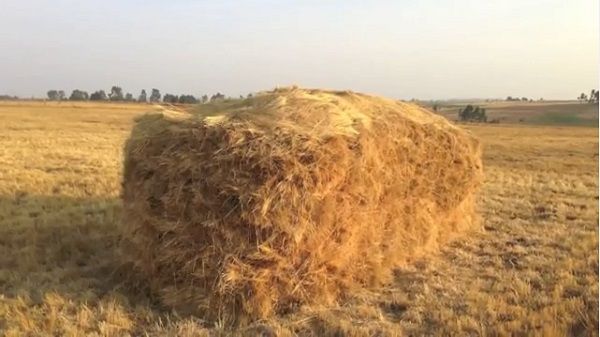
Gluten-free nutritious staple crop, teff, in Ethiopia commands more attention worldwide as ancient indigenous grain
By Seleshi Tessema (Anadolu Agency)
ADDIS ABABA–As global demand for Ethiopia’s gluten-free indigenous staple crop grows, officials and businesses are looking to tap the global market by modernizing the ancient crop, letting its healthy taste spread worldwide.
Teff is a staple crop in the East African country that yields a mixed red-and-white seed the size of a poppy.
Ethiopian consumers buy the seed from farmers or traders and ground it into flour to make a pancake-like fermented spongy bread called injera, which can be consumed two or three times a day.
According to the UN’s Food and Agriculture Organization (FAO), teff accounts for about two-thirds of the daily protein intake in the Ethiopian diet.
‘Like coffee, teff is ours’
“Teff is as old as Ethiopia,” said Esayas Lema, deputy head of the Agricultural Extension Program of Ethiopian’s Agriculture Ministry.
“It was first discovered by Ethiopian farmers, who have been cultivating it for more than 3,000 years,’’ he said.
“And like coffee, teff is ours, it is Ethiopia’s gift to the world.’’
Some 6.5 million farmers produce 44 million quintals (a unit equal to 100 kilograms) of teff every year.
“Due to the introduction of better seeds and farming technologies, production has risen more than 40 percent over the last five years,” Lema said.
Teff is farmed and consumed in nearby Eritrea and South Africa as well as the U.S., Australia, Canada, the Netherlands, Spain, and India.
However, Esayas said, more than 90 percent of the world’s teff is grown in Ethiopia. In 1886, Britain’s Royal Botanic Gardens took the crop and sent it to be grown in North America, Europe, and Africa.
Read the complete story at Anadolu Agency
——
See also:
- A Growing Demand for Mushroom in Ethiopia
- Ethiopian Honey Farmers Struggle with Sticky Traditions
- VIDEO: Mama Fresh ― Taking the Ethiopian Staple Injera Global
- Chef Yohanis: Ethiopia’s Gourmet Guru Seeks to Spread Love for the Country’s Cuisine
- VIDEO: Ethiopia Offers the Perspective of a Huge Consumer Base, Unibra S.A. COO Thomas Hochreiter
